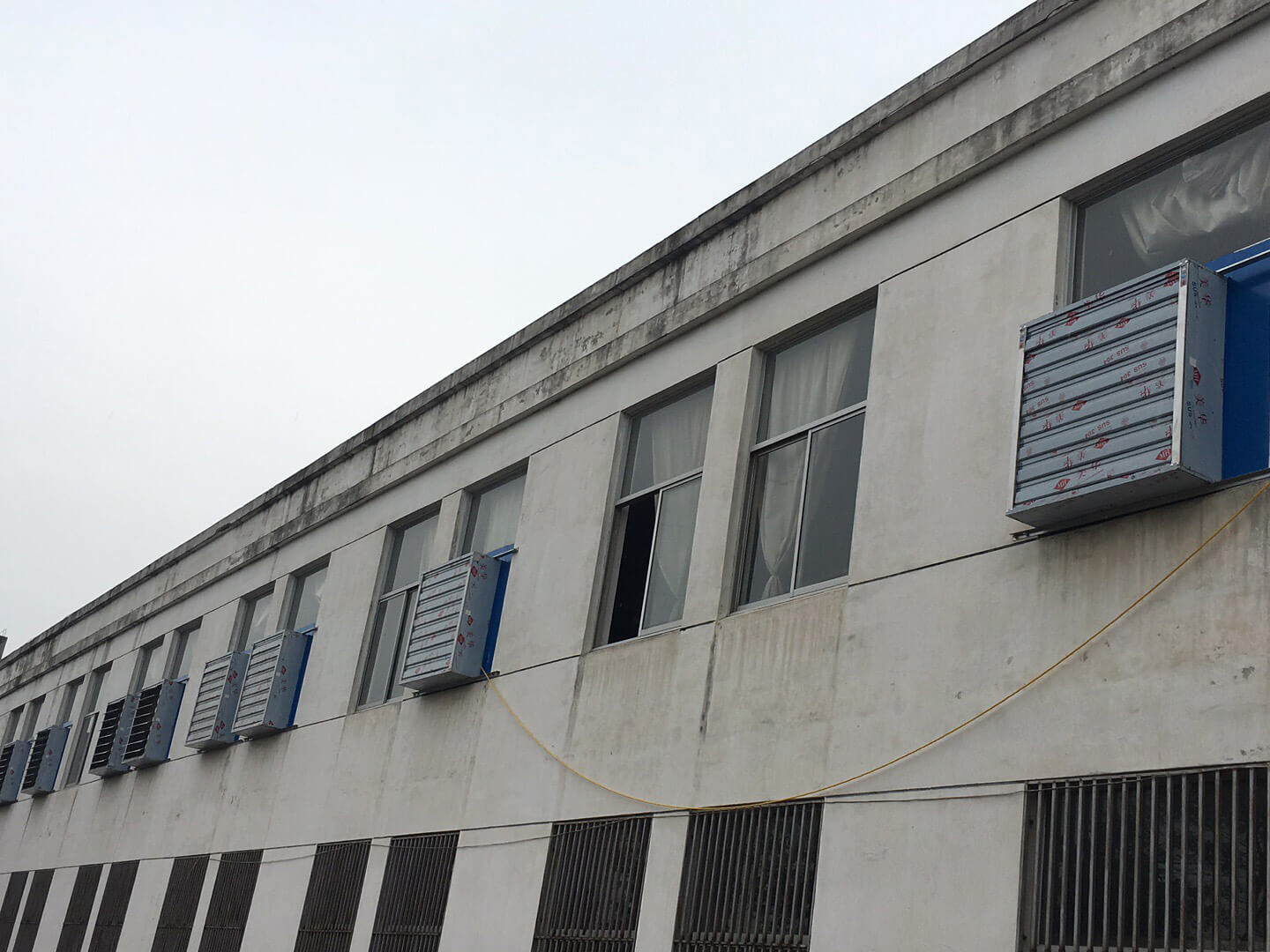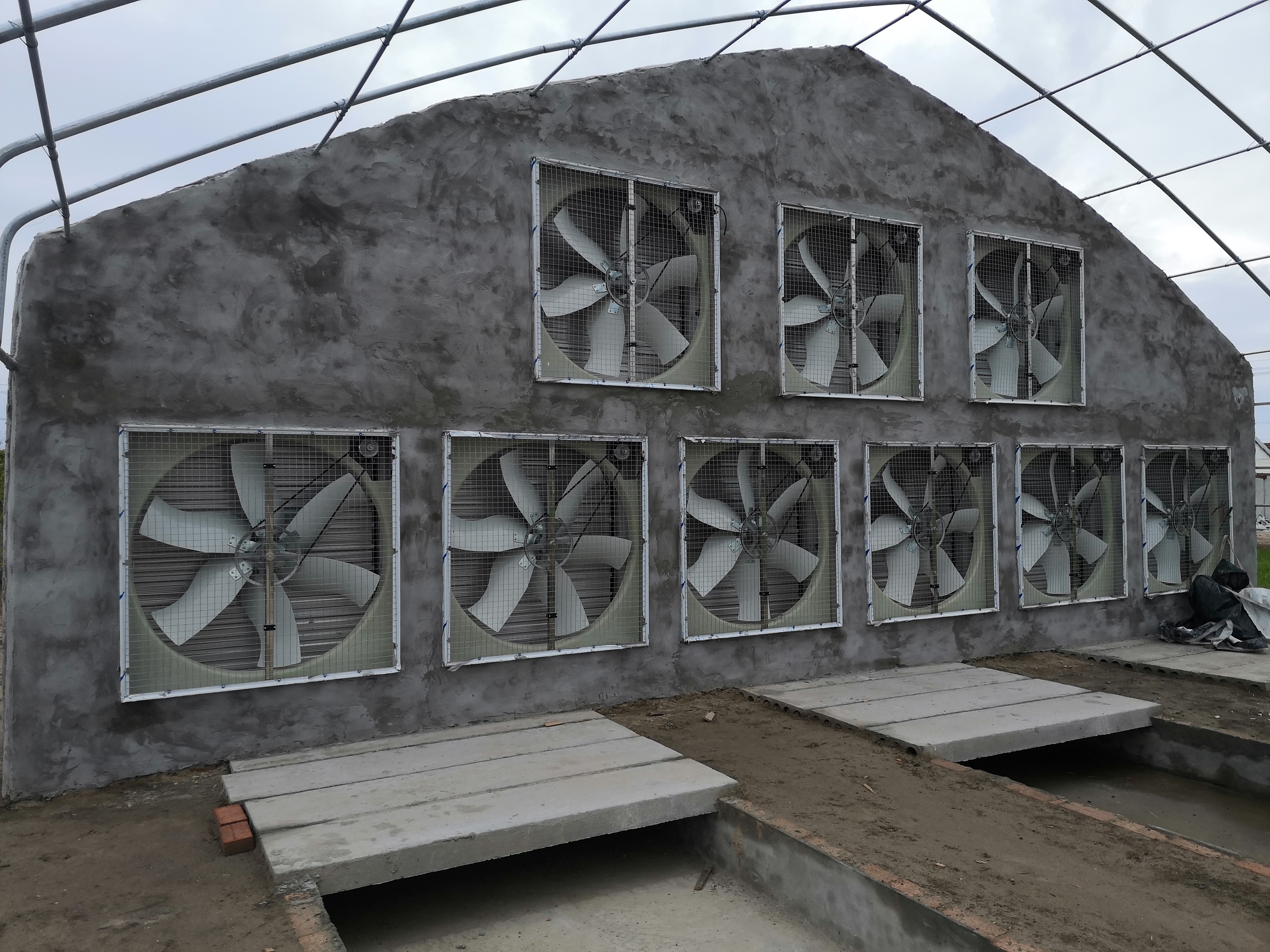Practical EHS Tips, News & Advice. Updated Daily.
Back to Basics is a weekly feature that highlights important but possibly overlooked information that any EHS professional should know. This week, we examine how to manage indoor air quality. Fiber Glass Cone Fan

How well are you managing the indoor air quality in your workspace? The biggest indoor air concerns for decades were exposure to radon, mold, and tobacco smoke. The focus has now shifted to respiratory infections and wildfire smoke.
Is your facility located in a region beset with wildfire smoke? Are you prepared for a triple surge in respiratory infections—COVID-19, influenza, and respiratory syncytial virus (RSV)—anticipated this fall and winter? In its October 28 influenza surveillance report, the Centers for Disease Control and Prevention (CDC) reported early increases in seasonal flu.
The White House recently hosted a summit on indoor air quality that included academics, executives, and current and former government officials.
Dr. David Michaels, former assistant secretary of labor for occupational safety and health under President Barack Obama, moderated the “Panel on Why Improving Indoor Air Quality Makes Good Business Sense.”
“I’m proud to say that OSHA understood from the very beginning that this understanding of COVID spread,” primarily through respiratory droplets and fomites (infectious particles on objects or surfaces), “was inadequate.”
“We learned during the H1N1 pandemic in 2009-2010 that many viruses like coronavirus, like influenza, were spread not just by droplets, but by aerosols, tiny airborne particles.”
The existence of aerosolized SARS-CoV-2 was firmly established in 2020.
Airborne particles “can travel the air far more than six feet in distance, and they can accumulate in the air, leading to greater exposure,” Michaels said at the White House summit.
“This means that respirators like N95s are far superior to surgical masks, and that it’s vitally important to ensure the indoor air we breathe is as virus-free as possible.”
This past spring, a group of public health experts urged the Occupational Safety and Health Administration (OSHA) to establish federal workplace standards for ventilation and other controls like appropriate personal protective equipment (PPE) and physical distancing in anticipation of future surges in COVID-19 infections. The group recommended that OSHA incorporate ventilation and air filtration requirements for indoor work environments into federal standards and the agency’s employer guidance.
This summer, the Lancet COVID-19 Commission’s Task Force on Safe Work, Safe School, and Safe Travel released a report recommending that employers and building owners take steps to reduce COVID-19 transmission that include the following:
The task force’s recommendations are based on an understanding of the danger posed by virus-laden aerosols.
Many of the recommendations in early COVID-19 guidelines and requirements of the first state-level emergency temporary standards (ETS) were based on the assumption that COVID-19 spread through larger respiratory droplets. However, interventions like clear plastic barriers, which were recommended in early COVID-19 guidelines and early regulations, can actually allow infectious particles to accumulate. When OSHA issued its healthcare COVID-19 emergency temporary standard, the American Industrial Hygiene Association (AIHA) expressed concern about requirements for physical barriers.
The group pointed out to the agency that while barriers might offer a sense of security for workers and members of the public, they effectively decreased the mixing of air in any room where they are erected.
Newer requirements stress the importance of ventilation and air filtration. For example, Oregon’s permanent COVID-19 regulation requires that employers optimize and maintain workplace ventilation systems.
To conform to these updated recommendations and regulations, you will need the services of facilities staff and vendors to properly operate or upgrade HVAC systems.
While hospitals and healthcare facilities may have HVAC systems with components like high-efficiency filters and ultraviolet germicidal irradiation (UVGI) that can effectively eliminate viruses, taking some simple steps may help you prevent or reduce infections in your workplace. These steps include:
Much of the science around ventilation and infection control predates the COVID-19 pandemic by a century. In the wake of the global influenza pandemic of 1918–1919, the widespread adoption of steam radiator heat enabled building occupants to open windows during winter, diluting the concentration of infectious particles in indoor air.
The CDC now confirms that COVID-19 is spread when someone breathes in small droplets or particles containing SARS-CoV-2, the virus that causes COVID-19.
The Environmental Protection Agency (EPA) explains that when people infected with COVID-19 cough, exhale during exercise, sing, or even speak or breathe normally, they release droplets and particles of respiratory fluids containing the SARS-CoV-2 virus. Unlike droplets that may quickly fall to the ground, very fine particles can continue to spread through the air in an indoor space. Particles can accumulate in spaces with poor ventilation.
The CDC recommends avoiding poorly ventilated spaces. In fact, one of the first documented outbreaks of COVID-19 in the United States was a “superspreading” event in a poorly ventilated space affecting members of the Skagit Valley Chorale in Skagit Valley, Washington. A single member experiencing cold-like symptoms at a March 10, 2020, choir rehearsal spread the disease to 53 members among the 61 attending. Two choir members later died.
Addressing indoor air quality represents a significant change from “business as usual.” Building ventilation systems have long been designed for comfort and general air quality (removing odors), not the removal of particles from an infectious source, the American Conference of Governmental Industrial Hygienists (ACGIH) points out.
In some buildings, system inlet and outlet placement can lead to a concentrated buildup of infectious particles.
Long before the COVID-19 pandemic, professionals and researchers knew about the link between poorly ventilated indoor spaces and respiratory infections. However, there are indoor air quality issues besides risks of infection. Research has established a link between poor indoor air quality, higher sick leave costs, and lost productivity. Researchers in December 2000 analyzed the sick leave use among employees of a large manufacturer. They found increased sick leave use among workers assigned to poorly ventilated spaces. Their analysis found the employer could have seen net savings of $400 per employee per year by improving ventilation.
Joseph B. Allen, a Harvard public health researcher who spoke at the White House indoor air quality summit, points out that HVAC standards for buildings other than hospitals do not recommend enough air changes per hour to achieve infection control. In a commentary in the Journal of the American Medical Association, Allen recommended increasing the number of air changes (four to six per hour in small spaces like retail shops) through increased outdoor air ventilation, recirculated air passed through a filter with a MERV rating of at least 13, or the use of portable air cleaners with high-efficiency particulate air (HEPA) filters to limit COVID-19 transmission.
OSHA recommends that employers consult a qualified HVAC professional to ensure that building ventilation systems operate optimally. Ventilation and air filtration also are part of the agency’s guidance for employers on mitigating and preventing the spread of COVID-19 in the workplace. Other controls include encouraging and facilitating vaccination and ensuring that workers infected with COVID-19 stay home to eliminate infectious disease risks for others.
The American Society of Heating, Refrigerating, and Air-Conditioning Engineers (ASHRAE) has recommendations for protecting building occupants during COVID-19 surges, including using portable air cleaners. The ASHRAE even offers guidance on protecting commercial building occupants from wildfire smoke.
Methods to improve ventilation include increasing the introduction of outdoor air, using fans to increase the effectiveness of open windows, ensuring ventilation systems operate properly, and increasing the level of air filtration.
Washington’s Division of Occupational Safety and Health (DOSH) revised its employer guidance on workplace ventilation earlier this year. DOSH recommends that employers and building owners:
Federal OSHA also recommends using portable air cleaners with HEPA filters in spaces with high occupancy or limited ventilation in its COVID-19 employer guidance. The EPA states that portable air cleaners with HVAC filters can help reduce airborne contaminants, including viruses, in a building or small space when used properly.
Portable air cleaners help provide additional ventilation when outdoor air ventilation is not possible or preferable due to outside humidity, temperature, or air pollution.
Whether you’re dealing with wildfire smoke or spikes in respiratory infections, interventions like increased ventilation, high-efficiency air filtration, or even the use of portable air cleaners can improve indoor air quality.
The Hazard Communication Standard (HCS) requires pictograms on labels to alert users of the chemical hazards to which they may be exposed. Each pictogram consists of a symbol on a white background framed within a red border and represents a distinct hazard(s). The pictogram on the label is determined by the chemical hazard classification.
Do your employees know how to handle hazardous materials safely? Here are 11 basic rules all employees who handle hazardous materials should know and follow.
Why reinvent the wheel when there are so many ready-made safety observances to link up to? The National Safety Council (NSC) publishes an annual list of safety meeting topics. Here are some highlights.
Return on investment (ROI) is an important pillar of a business case for EHS investment, but it’s not the foundation. There’s a right time and audience for a return on investment (ROI) discussion when making your pitch for EHS spending. The Intelex Insight Report, Determining the ROI of Safety: Why Data Matters, explains when to use […]
Environment, sustainability, and governance (ESG) has changed the perception of EHS as businesses show keen interest in aligning with the essential principles of protecting the planet and people. ESG gives EHS practitioners a platform to be a business partner – one that’s not simply judged from a traditional cost-avoidance function. The Insight Report, What Every […]
When maintaining a safe work environment, it’s important to consider risk and take steps to manage it. The Risks and the Rewards survey from Avetta and EHS Daily Advisor was launched in May 2022 and gathered the insight of 106 environment, health, and safety (EHS) professionals about how their organizations handle risk management and mitigation. […]
According to the International Labor Organization (ILO), the economic cost of unregulated occupational health and safety practices is estimated to be close to 4% of the yearly global GDP which is around $3 trillion. Businesses around the world are paying a steep cost on workplace incidents and safety hazards. To mitigate damages, organizations must ensure […]
Are you an environment, health, and safety (EHS) professional with something to contribute to your professional community? If so, we want to hear from you! As we build the EHS Daily Advisor community, we are looking for professionals, managers, and executives to be a part of our Faces of EHS profile series as well as contribute thoughtful content that can help our colleagues in the field with their compliance and cultural efforts. Learn more!

Poultry Shed Fan The mission of EHS On Tap is to provide clear, relevant, actionable information on topics that matter to EHS professionals in podcast form through engaging and insightful interviews with experts and thought leaders. Listen to the latest and subscribe!